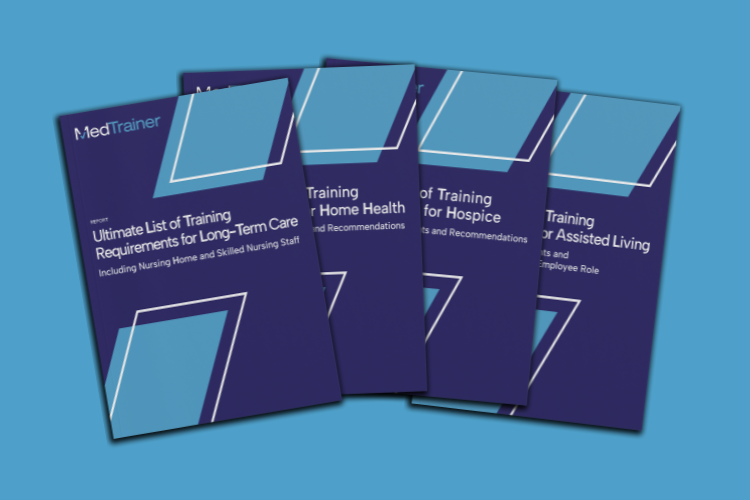The Commission on Accreditation of Rehabilitation Facilities (CARF) is an international, independent, nonprofit accreditor of health and human services providers, focusing on rehabilitation, behavioral health, employment, community services, and aging services.
CARF accreditation benefits staff and patients by ensuring that the organization adheres to best practices and maintains a high standard of care. For staff, it means working in an environment that fosters continuous improvement, professional development, and effective teamwork. For patients, it ensures they receive quality care, and that services are evaluated and deemed to meet the highest standards.
Achieving CARF accreditation is a laborious process that requires attention to detail, project and documentation management, and an even more intense focus on quality and patient care. Use the steps below to secure CARF accreditation.
Step 1. Research & Understand CARF Standards
Familiarize yourself with the CARF standards specific to your service area. These standards provide guidelines on program management, staffing, service delivery, and other aspects of care. The standards cover different aspects of service provision, and they vary depending on your organization’s service area focus.
Some of the CARF standards include:
- Leadership
- Human Resources
- Health and Safety
- Financial Management
- Accessibility
- Rights of Persons Served
- Program and Service Delivery
- Performance Measurement and Management
- Business Practices
- Technology and Information Management
Step 2. Perform a Self-Assessment
Conducting a CARF self-assessment is an essential step in the accreditation process, as it helps identify areas of strength and areas that require improvement. Here is a brief outline of how to conduct a CARF self-assessment:
- Assemble a team: Form a multidisciplinary team with representatives from various departments, including management, frontline staff, and individuals with in-depth knowledge of your organization’s policies, procedures, and practices.
- Review CARF standards: Obtain the CARF standards manual relevant to your service area and thoroughly review the standards to ensure a clear understanding of the expectations and requirements.
- Assess current practices: Evaluate your organization’s policies, procedures, and practices against the CARF standards. Identify areas where your organization is already in compliance and those where improvements are needed.
- Gather documentation: Collect and review the necessary documentation demonstrating your organization’s compliance with the standards: policies, procedures, staff training records, safety plans, financial records, and more.
- Identify gaps: Highlight gaps between your organization’s current practices and the CARF standards. Prioritize the areas that need improvement and develop an action plan to address these gaps.
- Develop an improvement plan: Create a detailed plan outlining the steps to address identified gaps, including assigning responsibilities, setting deadlines, and allocating resources.
- Implement changes: Execute the improvement plan and monitor progress to ensure that your organization is moving towards compliance with the CARF standards.
- Continuous monitoring: Evaluate your organization’s practices to ensure ongoing compliance and identify new areas requiring attention.
Remember that self-assessment is an opportunity for growth and improvement rather than a one-time exercise. Regular self-assessment helps maintain a culture of continuous quality improvement and ensures that your organization remains committed to providing high-quality services.

Get a list of training requirements for all roles in post-acute care organizations.
Step 3. Prepare Documentation & Submit the Application
Organize and maintain all the necessary documents to demonstrate your organization’s compliance with CARF standards. MedTrainer can help with this process by providing a platform to store, manage, and easily access important documents, ensuring a smoother accreditation process.
When submitting a CARF application, you must include the following documents:
- Application form
- Detailed information about your organization, such as location and services provided
- Program/service descriptions
- Staff information
- Proof of CARF compliance, including policies, procedures, strategic plans, quality improvement plans, and other supporting materials
- Application fee
- Signed attestation
Ensure all submitted materials are accurate, complete, and well-organized to facilitate a smooth application review process. After applying, CARF will review the materials and determine your organization’s eligibility for an on-site survey. Remember that submitting the application is just one step in the accreditation process, and you will need to continue preparing for the on-site survey by maintaining compliance with CARF standards.
Step 4. Prepare for the On-Site Survey
In anticipation of the on-site survey, train your staff on CARF standards and ensure that your organization is fully prepared to demonstrate compliance. Your team should maintain full compliance between your self-assessment and on-site survey. You put systems in place during the self-assessment, and now it’s time to put them to work. It’s also important to let healthcare providers, staff, stakeholders, and clients know you are working towards accreditation.
Step 5. On-Site Survey
The on-site survey is a crucial part of the CARF accreditation process, as it allows CARF surveyors to assess your organization’s compliance with their standards. The survey typically takes place over several days, depending on the size and complexity of your organization. Here’s what’s involved in the on-site survey:
- Opening conference and introductions
- Facility tour
- Document review
- Staff interviews
- Client and family interviews
- Observation of service delivery
- Review of performance data
- Exit conference to discuss their preliminary findings, provide feedback, and identify any areas requiring improvement
- Post-survey report
The on-site survey allows your organization to showcase its commitment to quality and adherence to CARF standards. By adequately preparing for the survey and addressing any areas of non-compliance, your organization can demonstrate its dedication to providing the highest quality care and services to patients.
Step 6. Post-Survey Actions
After the survey, you will receive a report outlining the surveyors’ findings and recommendations. At this time, your organization’s leadership reviews the report, highlighting strengths and areas for improvement.
Based on the post-survey report, your organization should develop an improvement plan to address any areas of non-compliance or recommendations provided by the surveyors. You have a specified timeframe (usually 30-90 days) to submit a formal Quality Improvement Plan (QIP) to CARF. This plan should detail the steps your organization has taken to address the identified areas of non-compliance or improvement.
Then, CARF will review your submitted QIP and provide feedback. They may proceed with the accreditation decision if they determine that your organization has adequately addressed the identified issues. If further action is required, they may request additional information or resubmission of the QIP.
Step 7. Receive Accreditation
Once CARF is satisfied with your organization’s response to the findings and improvement plan, they will decide your accreditation status. If approved, your organization will receive a CARF accreditation certificate, valid for one, two, or three years, depending on your level of compliance with the standards.
After receiving CARF accreditation, your organization should continue to monitor its practices, maintain compliance with CARF standards, and engage in continuous quality improvement. This ongoing effort ensures that your organization remains committed to providing high-quality care and services.
Your Navigators in the CARF Accreditation Process
MedTrainer’s comprehensive compliance and accreditation solutions simplify and streamline your journey toward CARF accreditation. With our extensive expertise, user-friendly platform, and dedicated support, we help organizations navigate the complex accreditation process easily and confidently.
By partnering with MedTrainer, you can efficiently manage documentation, ensure staff training, and maintain ongoing compliance to achieve and maintain your accreditation status. Experience the MedTrainer difference and unlock your organization’s potential for delivering exceptional care and services.
Ready to take the first step? Schedule a demo today and discover how MedTrainer can empower your path to CARF accreditation success.
